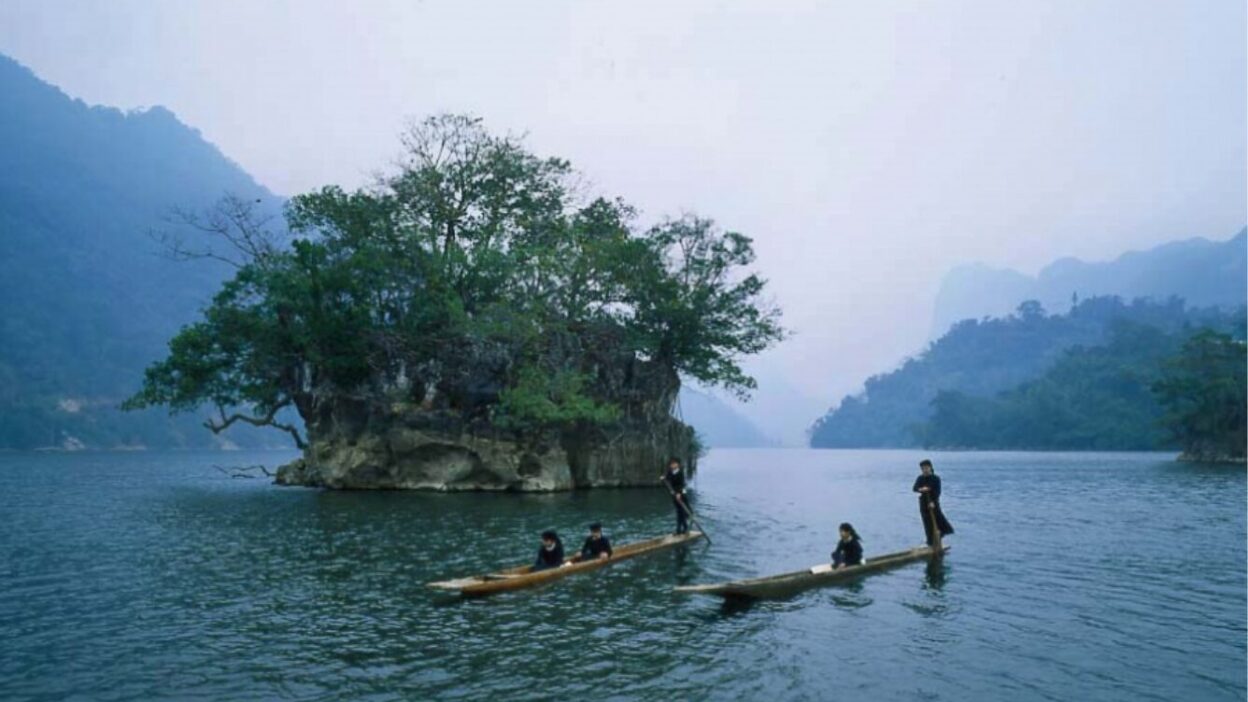If you are a nature lover, an adventurer at heart, or someone looking to escape the noise of the city, Ba Be National Park trekking offers the perfect opportunity to reconnect with untouched wilderness. Located in the heart of northern Vietnam, Ba Be National Park is not just another protected area — it’s a place where jungle trails, karst limestone mountains, pristine lakes, and ethnic cultures come together in one awe-inspiring destination.
In this guide, we will take you through everything you need to know about Ba Be National Park trekking: routes, landscapes, local cultures, travel tips, and why it should be on your trekking bucket list.
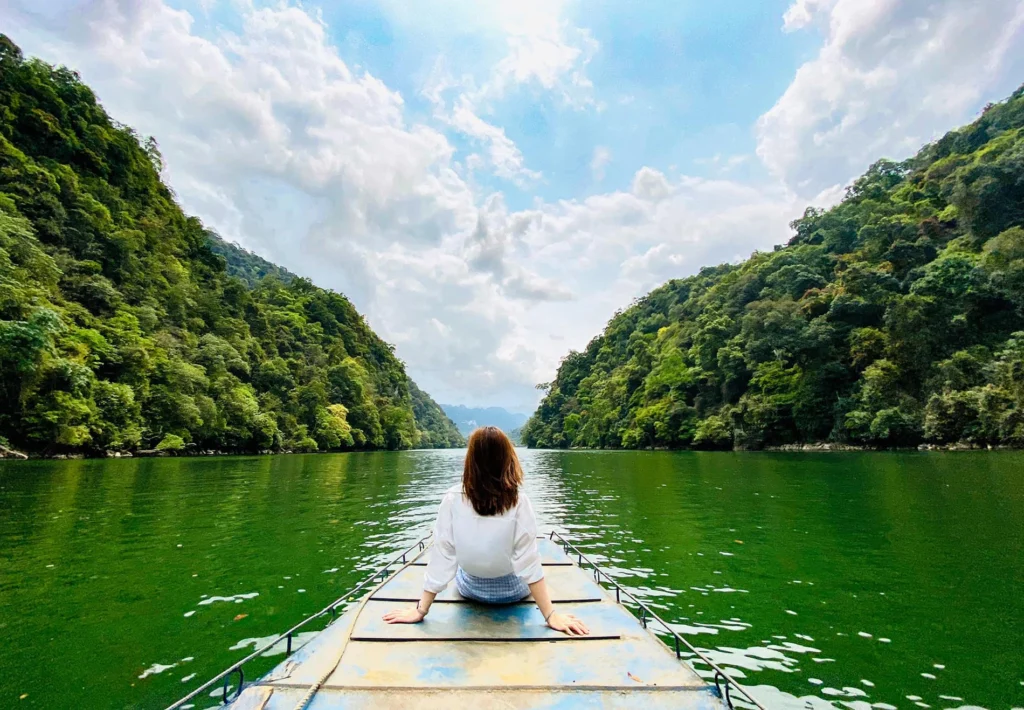
Where is Ba Be National Park?
Ba Be National Park is situated in Bac Kan Province, approximately 240 kilometers north of Hanoi. It spans over 10,000 hectares and is home to Ba Be Lake, Vietnam’s largest natural freshwater lake, as well as lush tropical forests, dramatic limestone peaks, caves, and waterfalls.
Designated as a Ramsar Site and recognized by UNESCO as a key biosphere reserve, Ba Be is not only ecologically significant but also culturally rich. The region is inhabited by ethnic minority groups like the Tày, Dao, and H’Mông, offering visitors a unique glimpse into traditional Vietnamese highland life.
Why Choose Ba Be National Park for Trekking?
Unspoiled Natural Landscapes
Ba Be is unlike many commercialized destinations in Vietnam. It is raw, serene, and deeply untouched. The terrain ranges from lowland tropical forests and wetlands to mountainous limestone formations and emerald lakes, providing endless beauty for trekkers and nature photographers alike.
Biodiversity Hotspot
Home to over 1,200 species of plants, 80 species of mammals, 300 species of butterflies, and hundreds of birds, Ba Be is a living encyclopedia of biodiversity. While trekking, you may encounter rare orchids, colorful butterflies, or even hear the gibbons calling through the trees.
Cultural Immersion
Trekking in Ba Bể is not just about the scenery; it’s also about the people. Stay in traditional Tày stilt houses, enjoy home-cooked meals, and engage in evening storytelling and music. The cultural richness adds soul to your trekking adventure.
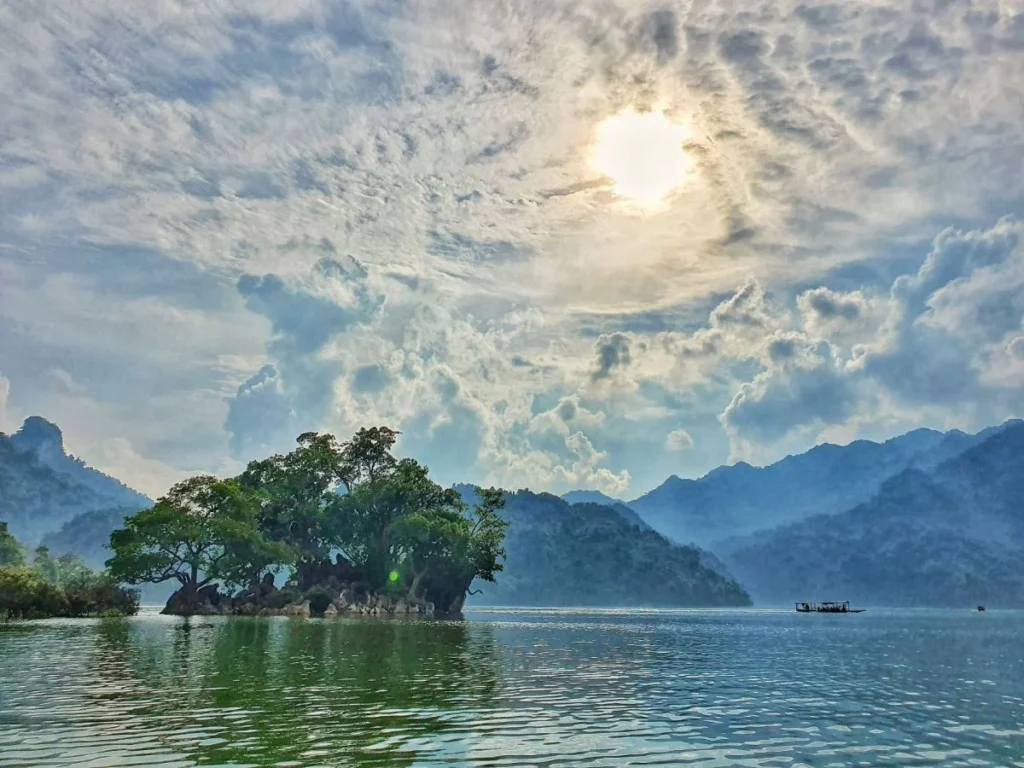
Best Time to Trekking
The ideal time for Ba Be National Park trekking is during the dry season, from October to April. The weather is cooler and more comfortable for hiking. However, the lushest landscapes appear right after the rainy season (August–October), when the waterfalls are at their fullest, and the forest is vibrant.
If you’re keen to witness local culture, plan your trip during the Lồng Tồng Festival in late January or early February — a traditional festival celebrating agricultural prosperity with music, dance, and ceremonies.
Popular Ba Be National Park Trekking Routes
Hua Ma Cave – Coc Toc Village – Ba Be Lake Loop
- Difficulty: Easy to Moderate
- Distance: 12–15 km
- Time: Full-day trek
Start your journey at Hua Ma Cave, known for its eerie legends and stunning stalactite formations. Trek through lush forest trails leading to Coc Toc Village, a Tày ethnic village located along the banks of Ba Be Lake. Walk along quiet rice paddies, bamboo groves, and riverbanks, returning via boat across the lake.
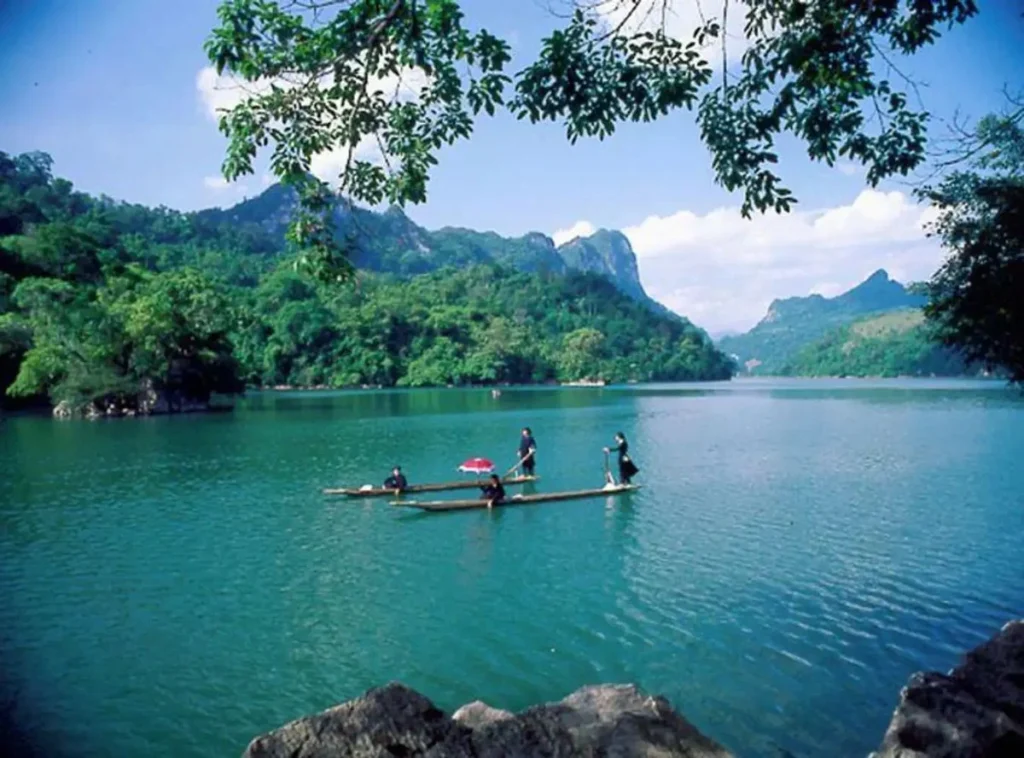
Na Nghe Village – Phia Bjooc Peak – Ban Cam
- Difficulty: Moderate to Challenging
- Distance: 20–25 km
- Time: 2 days / 1 night
This is the perfect route for those looking for elevation and panoramic views. Hike from the foot of Na Nghe, ascending through tropical forests to Phia Bjooc Peak, offering sweeping views over Ba Be Lake and limestone valleys. Camp overnight or stay in a Dao family homestay in Ban Cam before returning via a descending trail through wild bamboo forests.
Ba Be Lake to Tham Phay Cave and Jungle Circuit
- Difficulty: Challenging
- Distance: 25–30 km
- Time: 2–3 days
Tham Phay Cave is a lesser-known gem, often referred to as the “Son Doong of the North” due to its untouched beauty. The trek involves river crossings, steep ascents, and forest navigation, but the reward is immense. You’ll witness untouched cave formations, jungle silence, and rare wildlife along the way. This trek is ideal for seasoned hikers and adventurers.
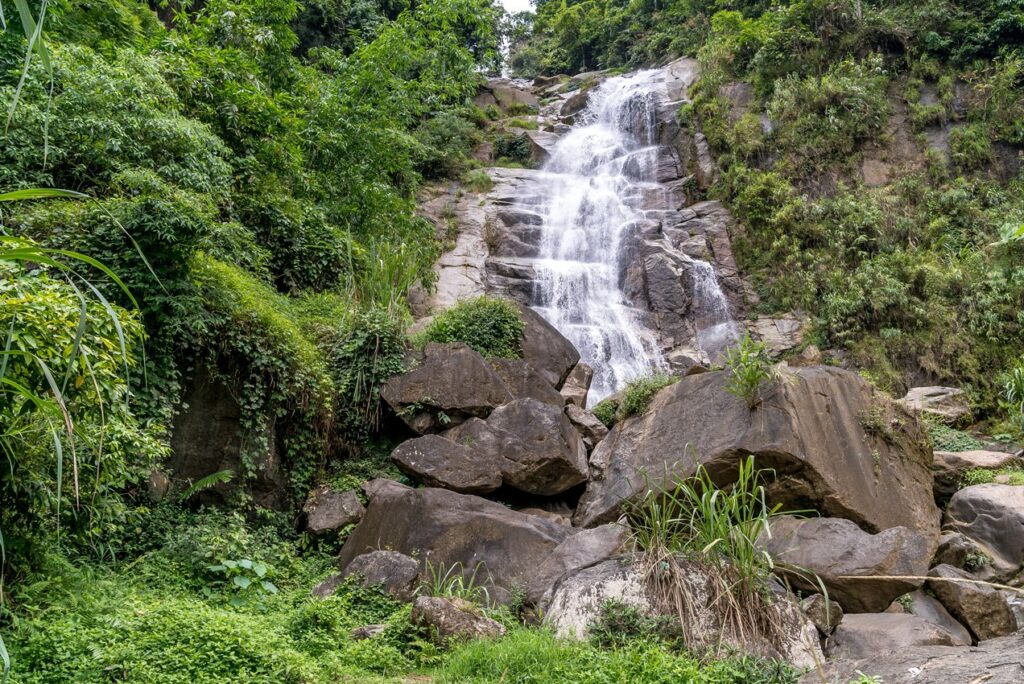
What to Expect During Your Ba Be National Park Trekking Adventure
🌿 Scenic Diversity
From mirror-like lakes and mossy forest trails to dramatic waterfalls and limestone cliffs, the scenery changes rapidly along your route. You’ll pass through varied ecosystems, offering different photo opportunities and wildlife sightings.
🏡 Homestay Experience
Most treks include overnight stays in ethnic minority villages, where you’ll sleep in wooden stilt houses, share meals with the family, and gain insight into highland traditions. These encounters are often the most memorable parts of the trek.
🛶 Combined Activities
Many trekking tours can include kayaking on Ba Be Lake, boat rides through Puong Cave, or cycling through the valley. You can mix your physical challenge with relaxed exploration.
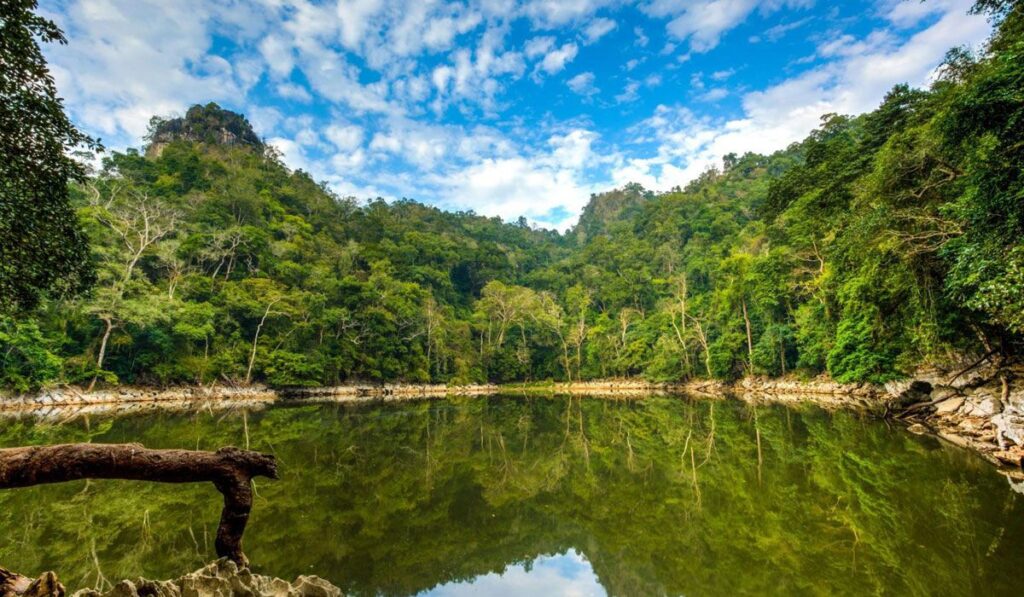
Practical Tips for Ba Be National Park Trekking
✅ What to Pack
- Trekking shoes (preferably waterproof)
- Lightweight, moisture-wicking clothing
- Rain jacket (especially from May–September)
- Hat, sunscreen, insect repellent
- Refillable water bottle & purification tablets
- Snacks and energy bars
- Basic first-aid kit
- Flashlight or headlamp
✅ Travel Tips
- Access: From Hanoi, take a bus to Bac Kan city, then a shuttle or motorbike to Ba Be. Alternatively, private transfers or guided tours offer more comfort.
- Accommodation: Book a homestay in Pac Ngoi or Coc Toc village for easy access to trails and lake tours.
- Guide Required: Although some trails are walkable without guides, hiring a local trekking guide ensures safety and enriches your experience with stories and hidden spots.
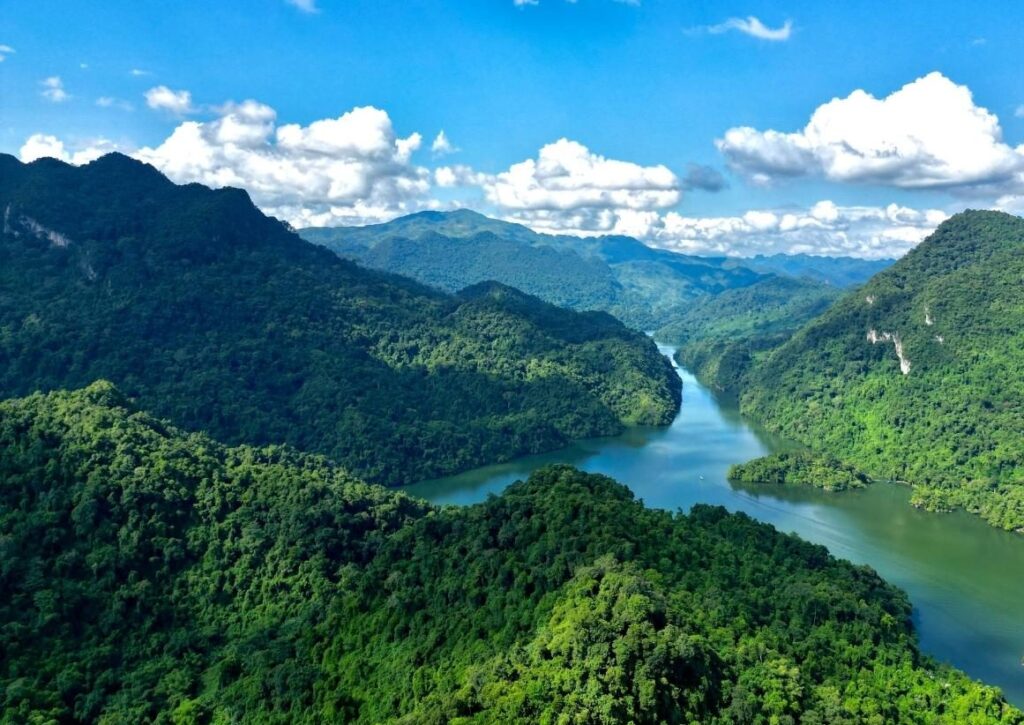
Must-See Highlights While Trekking
🏞️ Ba Be Lake
The centerpiece of the national park, Ba Be Lake is best explored by kayak or motorboat. Surrounded by towering cliffs and jungle-covered hills, it’s a serene start or end to any trek.
🕳️ Puong Cave
Puong Cave is 300 meters long and navigable by boat. It features colorful stalactites and is home to thousands of bats. The river flows directly through the cave — a stunning natural tunnel.
🧝 Ao Tien (Fairy Pond)
A small, mystical pond hidden among limestone cliffs, Ao Tien is known for its clear blue water and spiritual significance. Local legends say fairies bathed here at night.
💦 Dau Dang Waterfall
A wild and picturesque series of cascading rapids, surrounded by giant boulders and jungle flora. It’s also a great place for a rest stop or picnic during your trek.
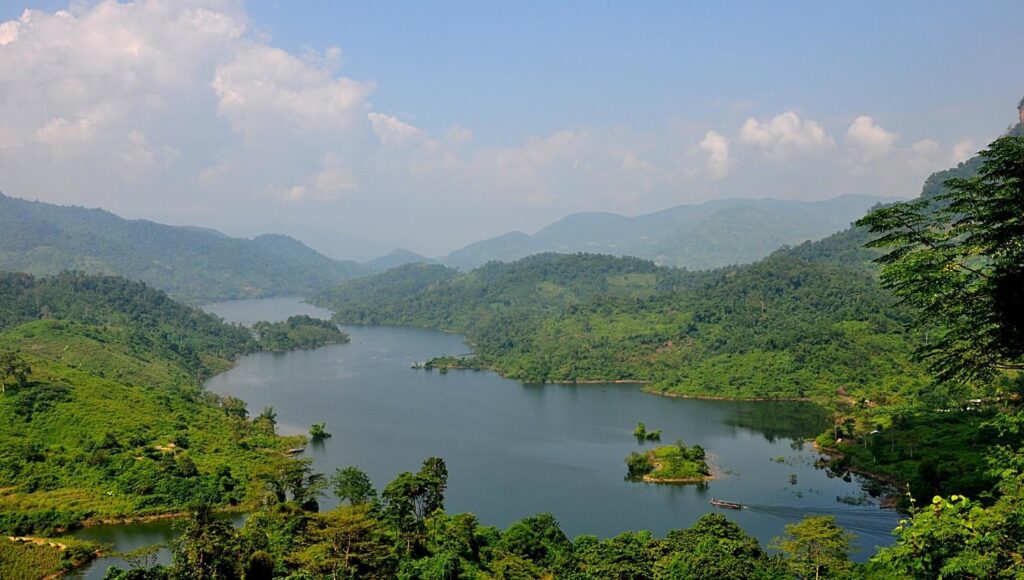
Cultural Connection: Life of the Tày, Dao, and H’Mông
Trekking Ba Be isn’t complete without understanding its people. The Tày ethnic group, known for their kindness and musical traditions, make up the majority of the population around Ba Be. During your stay, you may hear Then singing, a traditional spiritual song performed with the Đàn tính, a two-stringed lute.
The Dao and H’Mông people live in higher mountain villages. Their homes, language, and festivals add vibrant layers to the cultural tapestry of Ba Be.
Responsible Trekking in Ba Be
As Ba Be is an ecologically and culturally sensitive area, here are a few guidelines:
- Leave No Trace: Carry out all trash, avoid damaging vegetation.
- Respect Locals: Always ask before taking photos. Dress modestly.
- Buy Local: Purchase handmade crafts, stay in family-run homestays, and eat local food.
- Limit Plastic: Use refillable bottles and say no to single-use packaging.
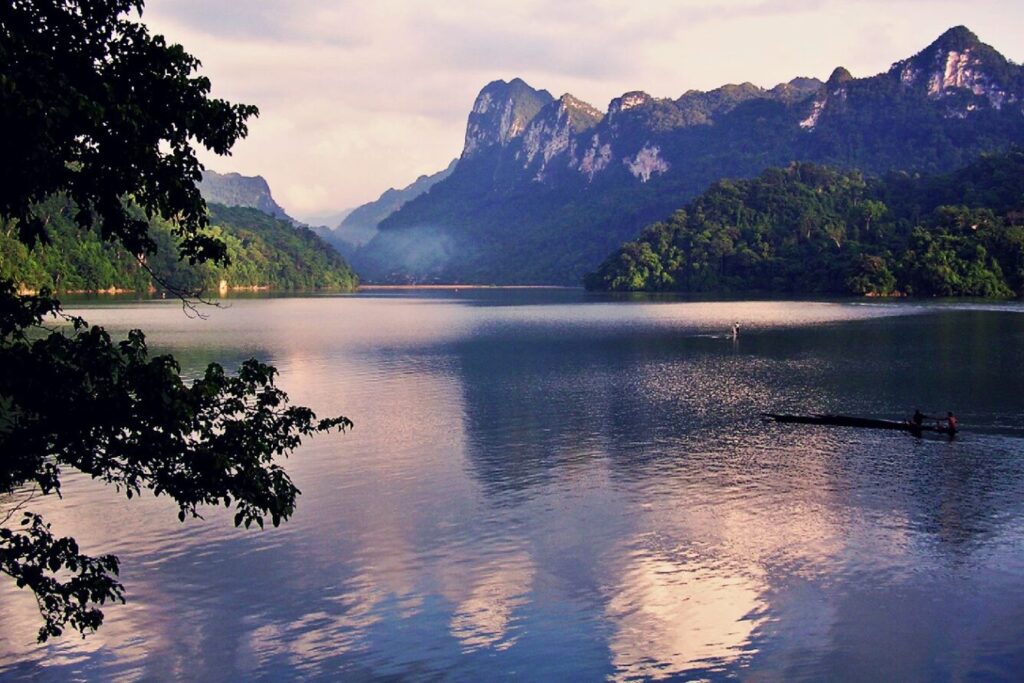
Conclusion: Why You Should Add Ba Be National Park Trekking to Your Vietnam Itinerary
For those seeking an authentic, immersive, and active travel experience in Vietnam, Ba Be National Park trekking offers everything — lush nature, cultural richness, physical challenge, and soul-soothing quiet. Unlike the busy trails of Sapa or the well-trodden paths of Da Lat, Ba Be remains a treasure waiting to be discovered.
Whether you’re hiking along rice paddies, listening to ethnic folk songs by firelight, or watching mist roll over jungle peaks — trekking in Ba Be brings you closer to the heartbeat of Vietnam’s wilderness with VietnamTour.
See more post: Explore Vietnam countryside: A journey into the heart of nature and culture

